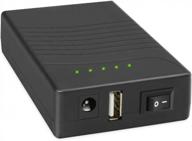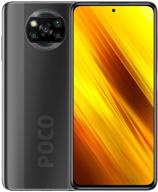
Review on Get the Ultimate Samsung Galaxy S20 Ultra 5G - Factory Unlocked & Packed with Long-Lasting Battery, Facial Recognition, and 128GB Storage in Cosmic Gray US Version by Jason Sisawang

Tested against iPhone 11 at multiple US carriers. The lack of dual SIM/eSim support didn't help me.
I bought this phone, tested the performance with the iPhone 11 at multiple carriers in the US, wanted to like it but ended up sending it back. The S20 Ultra phone is sold in 2 versions regardless of storage. The US version (base model number SM-G988U) and some China and Latin America versions are powered by Qualcomm Snapdragon, while the major world versions (base model numbers SM-G988F/N/B) are powered by Samsung Exynos chips. The US version doesn't have a dual/hybrid SIM tray that can hold one SIM and one microSD card or two SIMs. The US version has a SIM tray that can hold a SIM and optionally a microSD card. Non-US versions are 2 SIM capable and come with a physical 2 SIM tray. US variants must support CDMA operators (Sprint or Verizon), therefore two physical SIMs are not supported by the US version. Unfortunately, CDMA isn't going away any time soon. While Verizon has stopped activating new CDMA devices, they will not be activating GSM-only devices on their network, and they should continue to support CDMA access on millions of older devices in the field, especially for users with prepaid accounts. Sprint continues to steadfastly refuse to enable non-CDMA-compliant devices on its network, with no end in sight. How do I know? I've tried activating an ATT unlocked Samsung GSM phone only on Verizon and Sprint and it didn't even pass the IMEI check on either. Therefore, CDMA support is mandatory for me. If you buy a non-US third-party version to get dual SIM functionality, please note that the non-US version does not support Samsung Pay and some other features. in the US and will not work with Sprint or Verizon. You cannot enroll US credit cards in Samsung Pay with this device. This prevents you from entering US zip codes for billing when attempting to enroll a credit card. Yes, I know firsthand because I also bought the non-US version and had to return this unit due to this limitation. With the help of these chips, rooting is easy. Phones with a Qualcomm chip are relatively much more secure and efficient. As of March 2020, Samsung's website states that these phones support eSIM, but does not clearly state whether the eSIM options support eSIM for both US and other countries. eSIM gives us the possibility to use 2 phone lines. I saw that there is no software option to add a new eSIM on my Samsung S20 Ultra. This option is under System Settings -> Connections -> Manage SIM Cards on the Galaxy Fold, but the S20 Ultra didn't have this menu item. So my guess is that either the US variant doesn't support eSIM at all, or Samsung might add this feature in a future software update. In my opinion this is a big mistake by Samsung as I can't refuse my iPhone 11 which works with eSIM at the same time as a physical SIM card. Unfortunately, the journalists who wrote online reviews for this phone from the announcement to the launch date only focused on reviewing the camera on this device and complained about the lack of a 120Hz refresh at high resolution, the rapid battery drain at high refresh rates and the high price. They ignored the letter about things that matter to the rest of us, like eSIM support, call quality, speaker quality, face recognition speed, and fingerprint sensor performance. Everyone. At the moment, in March 2020, this information is in just one line, in small print, with an asterisk at the bottom of the specifications page, that eSIMs are supported, but not in all countries. Removed 2.5 stars from my rating due to lack of eSIM support on US phone variants. I tried an unlocked S20 ultra with nano SIMs from these carriers: 1) AT&T Prepaid: The phone works mostly out of the box with calls and basic data, but visual voicemail, VOLTE, and Wi-Fi calls didn't work. I had to flash the AT&T user data file (check xda-developers for links and steps) to get visual voicemail and wi-fi calling working. This custom data file replaces the standard Samsung phone dialer with a chunky AT&T dialer with offset buttons that include visual voicemail and AT&T video call buttons. 5G isn't currently supported by any prepaid carrier in the US, but AT&T's prepaid LTE speeds have been excellent, with fast ping times of around 25ms, and I've consistently received download speeds in excess of 120Mbps. 2) Verizon Prepaid: Phone worked right away but no visual voicemail. I had to flash a Verizon user data file for visual voicemail to work. 5G service isn't prepaid, but LTE+ speeds consistently exceed 150Mbps. Ping times were slightly slower than AT&T, averaging 60ms. 3) T-Mobile Prepaid: I had to flash the TMobile firmware for most features to work, including visual voicemail and Wi-Fi calling. Despite T-Mobile's hype about nationwide coverage, I haven't hit download speeds above 60 Mbps where I live in the Philadelphia metro area. I don't use T-Mobile for everyday use, but I had an active SIM card which I tested this phone with. 4) Visible Wireless: I liked Visible the most on this phone. Everything works out of the box, no firmware required. Visual Voicemail, Wi-Fi Calling and VOLTE worked flawlessly. No 5G support as Visible is a Verizon subsidiary and not a postpaid service. But LTE+ works out of the box and speeds have always been insanely good, over 200Mbps most of the time. The ping time was about 35 ms. I get the same speeds with Visible on my iPhone 11 pro max. 5) Google Fi: Everything except visual voicemail worked right away. I haven't tried any firmware to receive voicemail as I only use Google Fi for data during my international travels. The Samsung Galaxy S20 ultra device also doesn't support Google Fi automatic switching between TMobile and Sprint towers in the US like the Pixel device. Google Fi is the main reason I need eSIM support. Based on the above, I think all other US prepaid and MVNO providers like Straight Talk, Total Wireless, Cricket, Ting, Mint, Boost, and MetroPCS will work on an unlocked device, but you may need the parent's firmware Carrier Flash Get full support for Visual Voicemail, VOLTE and Wi-Fi calling when you purchase this device for these carriers. 5G only works if you have postpaid service from AT&T, Verizon, T-Mobile, and Sprint. , and if you are in an area with 5G towers. Your mileage will vary. I'm sick of the media hype or lack of 5G and I'm feeling 5G fatigue right now. I no longer care or desire it, although I haven't personally experienced it. Removed 1 star from my rating as a firmware update is required to fully utilize this phone on most US carriers. Flashing firmware is a fairly technical process and is best performed by someone who knows what they are doing. Call quality on a Samsung device is about the same as on the iPhone 11. Almost always crystal clear. The phone's ultrasonic fingerprint sensor is so-so, mostly random, and about the same as the Galaxy S10 devices. I wish they could just go back to a hardware sensor that worked flawlessly every time. Face ID is decent, not as good as the iPhone 11 but works great as an alternative to fingerprinting on this phone. Half a star is deducted from my rating due to unreliable fingerprint sensor. I use a DSLR camera for my photos, so I'm not worried about the performance of the phone's built-in camera. The only thing I liked about the Samsung S20 ultra. is the implementation of full-screen gestures, which makes the iPhone swipe up to home screen gesture pretty lame and lame by comparison. Samsung doesn't enable this by default and is under Settings -> Display -> Navigation Bar -> Full Screen Gestures. With this setup, there are 3 up scroll bars at the bottom of the screen, compared to 1 up scroll bar on the iPhone for launching apps, the home screen, and the back button. I'm very used to this lightning-fast way of swiping through screens and apps, and the iPhone's swipe gesture feels icy and weird to me now that there's no back gesture. To use this feature and if you are using a case on your phone, you need a Samsung case with a cut-out at the bottom so your finger doesn't scratch the edge of the case with every swipe. Also, you need to remove the screen protector that Samsung ships preinstalled on the device. The screen protector doesn't protrude beyond the edge of the screen, so it's a bit intrusive when booting up. I liked the S20 Ultra. I use an iPhone 11 pro max (stupid name for a device and I think Apple marketers were looking at male enhancement ads when they called it) and I hate it. I hate that Apple's overrated dark mode is just a lame implementation with their own Safari browser and email apps on the phone that don't show websites or emails in dark mode. I despise Siri which doesn't work 9 times out of 10. The Outlook app on my iPhone handles push messages much better than the native Mail app. Wi-Fi access on planes and hotel rooms is sluggish and sometimes never works on my phone. The native keyboard on the iPhone sucks, even with Swype. I could rant and rant, but I want to say that I'm by no means an Apple fan. Despite my hatred of the iPhone, I have to say that it supports eSIM perfectly, and an unlocked iPhone supports basically all bands in the world without resorting to devices and firmware variants tied to geographic borders. An unlocked S20 Ultra with a Qualcomm Snapdragon processor comes close to that utopia on paper, but Samsung had to smash it: a) No eSIM support on day one for all users worldwide - 2.5 star rating score in this test, it worked for visual voicemail and other features on major US carriers - 1 star removedc) Forcing users into a slow and unreliable fingerprint sensor - half a star removed didn't annoy me too much. In the end my phone came back for a refund because the lack of eSIM support broke the deal for me.
- Hires Camera Zoom: Capture takes pictures from 300ft that look like they were taken from 3ft; Revolutionary new 100x space zoom delivers unprecedented performance and clarity
- Crumpled packaging
New products
Comments (0)
Similar reviews
Top products in 📱 Cell Phones
Another interesting products

2PCS Pack 15.6" Laptop Screen Protector | Compatible With HP/DELL/Asus/Acer & More | 16:9 Display

41 Review

NinjaBatt High Performance Battery For Toshiba A665 And L755 Series - 6 Cells/4400MAh/48Wh

40 Review

Rechargeable 12V 3000MAh Lithium Battery Pack: Power Bank For LED Strip, CCTV Camera & More

43 Review

Sennheiser HD 206 Closed-Back Over Ear Headphones - Discontinued Model

195 Review






